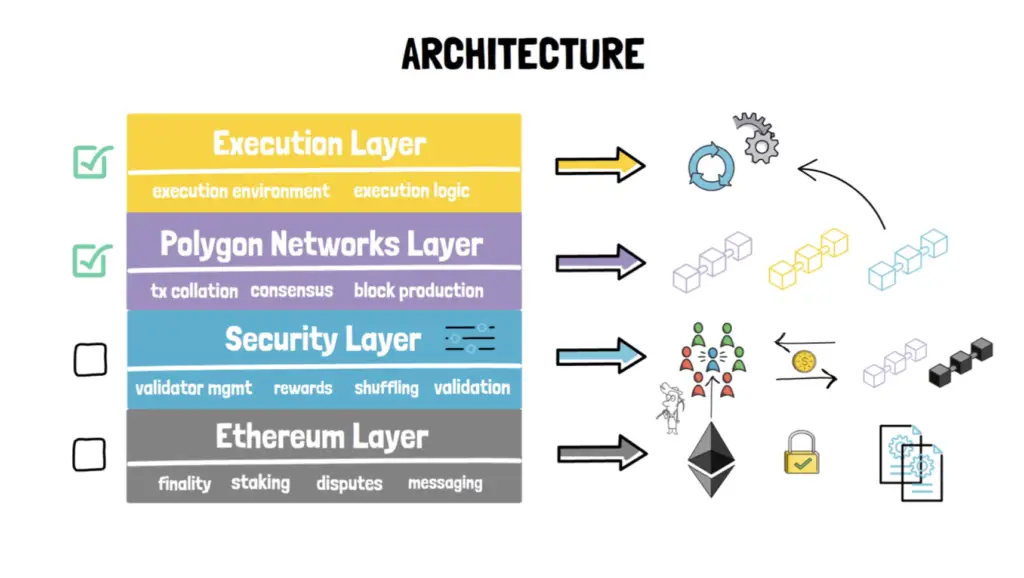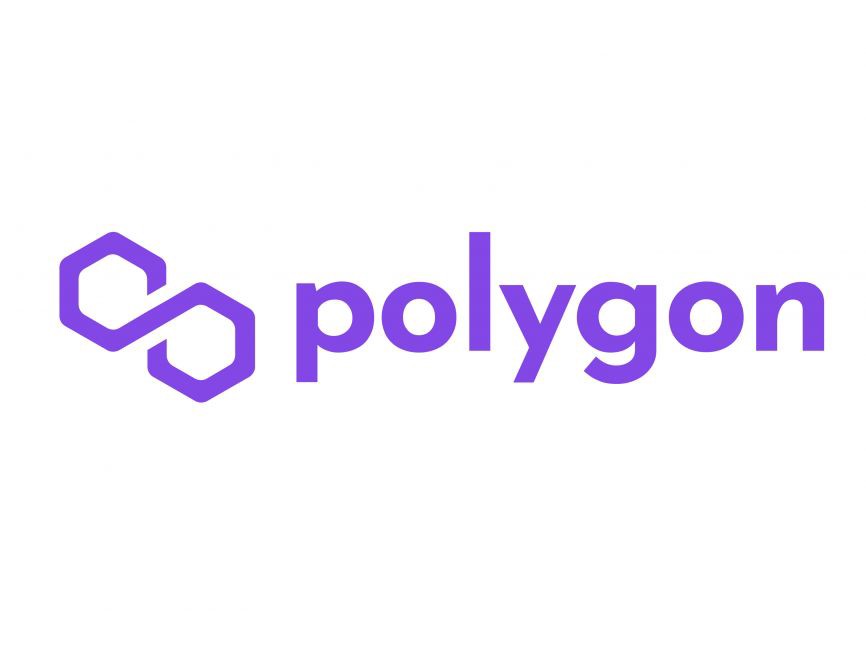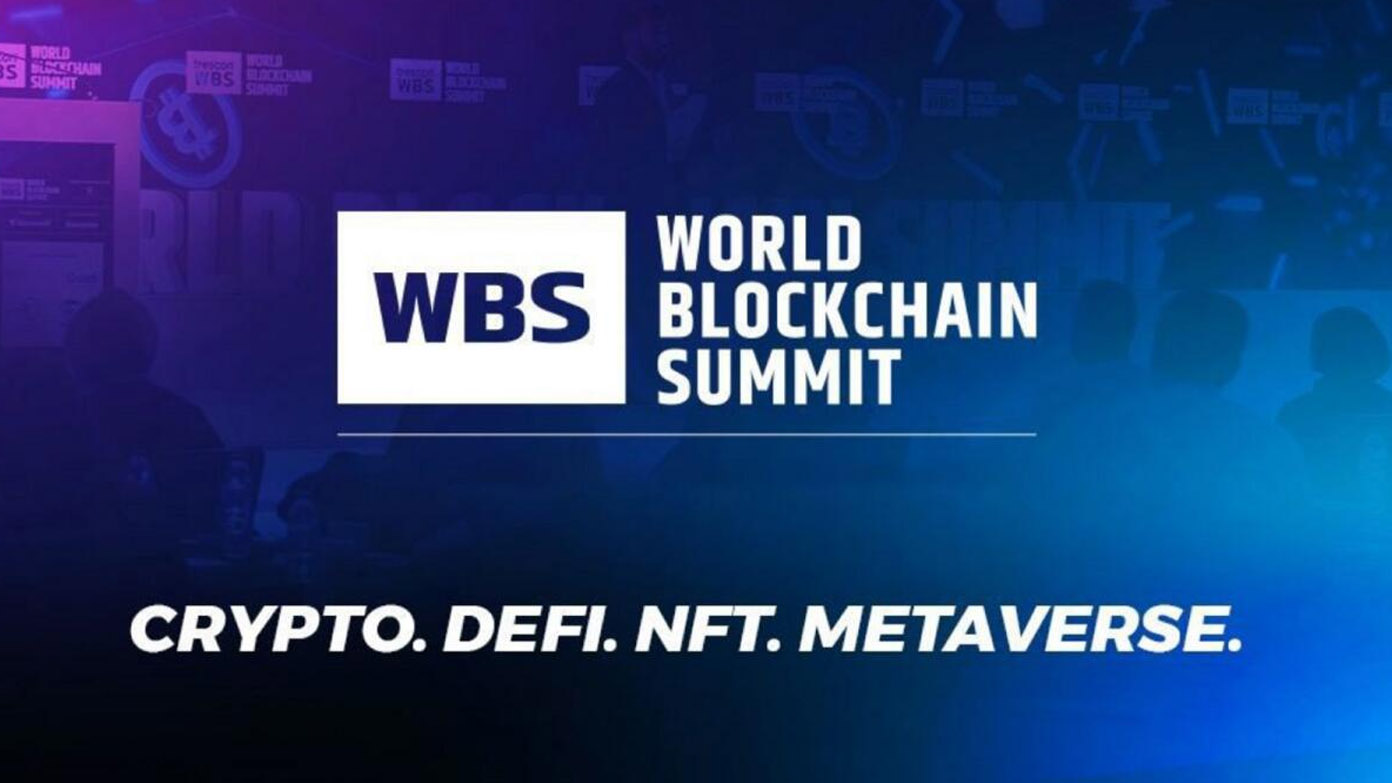It is true that blockchain and smart contracts have seized the attention of tech admirers worldwide but are still not able to attain mass adoption due to the challenges of scalability and user experience. Though Ethereum is a prominent blockchain network, it does have certain limitations, including network congestion and scalability. To jounce off these stumbling blocks without sacrificing decentralization, Polygon (Matic) comes into the picture. Let’s look at the Polygon features, what makes it unique, and related questions.
What is Polygon?
Polygon is a (layer two) side chain scaling solution developed to bestow scalability, interoperability, and the best-in-class user experience for DApp’s functionalities by running alongside the Ethereum network.
It uses Plasma Chains, zk-Rollups, and Optimistic Rollups scalability methods to bundle large numbers of transactions into a single transaction on the main chain (Ethereum). Polygon is previously known as Matic, and also, their native cryptocurrency is called MATIC, something similar to Ether for Ethereum.
Polygon aims to provide faster transactions at very low fees when compared to Ethereum’s present gas fee. It operates as a speedy parallel network that runs alongside the Ethereum mainnet and eliminates the complexities involved in the transactions.
It assists Ethereum in expanding its size, security, efficiency, and usefulness, thereby directly helping developers to build impressive products that can be deployed in the market at a quicker rate.
What Makes Polygon Unique?
The scalability solution of the Polygon network, which supports the Ethereum Virtual Machine (EVM), is one of the groundbreaking features that makes it unique from the other blockchain networks. It empowers connected chains to hold back self-sovereign security and, at the same time, establishes interoperability with one another and the main chain.
The development of decentralized applications in Polygon is similar to that development in the Ethereum ecosystem. Therefore, the platform is widely approachable to the largest blockchain community in the world.
In fact, it is Polygon that assists Ethereum with the high-scalable solutions, and users can greatly appreciate the perks of Ethereum’s functionalities without sacrificing any of its features and functionalities.
Features of Polygon
Being a protocol built by developers, for developers, Polygon offers pioneering features to combine the best of Ethereum and other promising blockchains.
- ETH Compatibility: The network is highly compatible with Ethereum and offers various tech stacks, tools, languages, and standards to make it easy for developers to build dApps.
- Scalability: Polygon has a higher throughput rate where it can process more than 1000 transactions per second.
- Security: The modular “Security as a service” is provided by either the primary mainnet or by the professional validators.
- Sovereignty: The platform bestows a tailor-made tech stack and dedicated resources with sovereign governance.
- Interoperability: Polygon provides native support to enable interactions across different blockchain networks.
- User Experience: It enables users to have a seamless and hassle-free web3.0 experience with its sophisticated functionalities.
- Developer Experience: Being the layer 2 solution, Polygon makes it easy for developers as they don’t require protocol level knowledge.
Polygon’s Vision to Transform Blockchain Sector
This protocol yearns to bring in a truly decentralized ecosystem where users can exchange value worldwide without any digital borders and intermediaries. They also strive to make users exchange their information seamlessly across different blockchain networks , thereby providing interoperability to the industry.
Polygon considers this as a significant benefit towards a borderless digital world. Ethereum’s internet of blockchains will offer a multichain ecosystem and an easy framework for developers to build their own protocols with just a single click.
Polygon addresses the present limitations of Ethereum like high gas fees, low throughput rate, poor user experience, etc., by providing highly scalable mechanisms and makes Ethereum a faster and cheaper multichain ecosystem. Additionally, it offers an infrastructure for blockchain networks to indulge in the utmost perks of cross-chain abilities.
FAQs to Know Polygon Better
Q. What is the architecture of Polygon?
The architecture of the network consists of four layers – Ethereum Layer, Security Layer, Polygon Network Layer, and Execution Layer. Out of all the layers, the first two are optional, while the latter are mandatory.
- Ethereum Layer: It takes care of Finality/Checkpoint, Staking, Dispute Resolving, and Communication between Ethereum and Polygon chains.
- Security Layer: This layer is responsible for validator management and Polygon chain validation.
- Polygon Networks Layer: This layer is liable for Transaction Collation, Local Consensus, and Block Production.
- Execution Layer: It understands and carries out transactions that are agreed upon by the network. Basically, accountable for the execution environment.
Q. Can the technology behind Polygon explained in simple terms?
Polygon offers the primary elements and tools to make users step their foot into a brand-new boundaryless ecosystem. It combines sovereignty, scalability, and flexibility with Ethereum’s security, interoperability, and developer experience to make it compatible with existing resources, such as Metamask, MyCrypto, etc.
The framework provides a one-click deployment of Ethereum-compatible networks and a growing set of modules for developers to build their desired decentralized applications.
Q. What are the different types of networks that Polygon Supports?
 The network lends a hand to two of the most significant types of Ethereum-compatible networks. It includes Stand-Alone Chains and Secured Chains.
The network lends a hand to two of the most significant types of Ethereum-compatible networks. It includes Stand-Alone Chains and Secured Chains.
Stand-alone chains are the type of networks whose security is completely under their control. They will have their own validators to validate transactions. This protocol guarantees the highest degree of independence and flexibility.
Secured Chains are the ones that use “Security as a Service” rather than having their own set of validators. Mostly, startups and security-based projects opt for this as these chains offer robust security.
Wrapping Up
Polygon uses a Proof of Stake (PoS) consensus mechanism where users stake their MATIC tokens for validating transactions. Also, it offers governance attributes to the participants, in which they can vote directly for the network updates. It is one of the very few protocols that has successfully addressed the scalability issues of blockchain. The Polygon team is still exploring ways to unleash the further potential of blockchain technology and simplify the existing processes.
You can also follow us for instant tech news at Google News or for tips and tricks, smartphones & gadgets reviews, join GadgetsToUse Telegram Group or for the latest review videos subscribe GadgetsToUse Youtube Channel.






